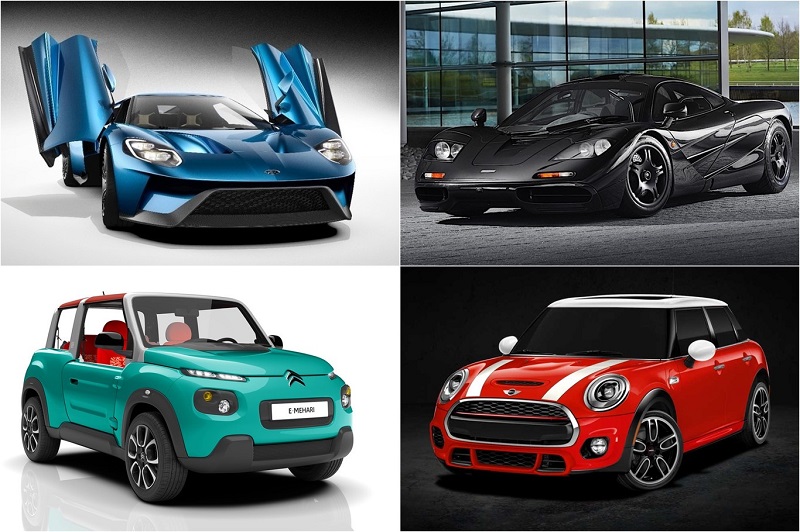Since there is a consciousness of human beings, a basic concern has been, repeatedly, concern about finding out who we are, remember where we came from and predict where we are going. This triple concern, properly conjugate has served to model the evolution and development of each society.
A few years ago that Nissan has been rising where we are going, while trying to predict what the future of mobility. Now, Nissan Futures opens the way for debate while offering a broad perspective on some elements that could shape the cities of the future: from cars that do not pollute in the city until a curious energy management.

Nissan: Beyond cars
Nissan has opted for the electric car as a key element for the future. With its models Leaf and e-NV200, signing Yokohama wants to show its progress in this type of engine, but these vehicles also form the basis on which Nissan builds a much broader concept.
Nissan are clear that the challenges offered by the future, both with regard to mobility as in regard to pollution, require holistic, comprehensive solutions that transcend individual companies. As the president of Nissan Europe, Paul Wilcox, “automakers cannot continue working isolated from the world.”
Thus, by virtue of said claims that the union is strength, Nissan is looking for partners that jointly develop a vision of the future that goes beyond cars to redefine the way that citizens relate with the cars and the energy we use, and finally achieve a more sustainable future.
Who Nissan will join to achieve that goal? At the moment, we discuss two significant advances, where the firm energy management Eaton and Enel power have played a key role: the domestic system electricity storage xStorage and the system Vehicle-to-Grid, which will be operational by the end of the year in the UK. Both technologies will be incorporated by Nissan at its headquarters in late 2017.
xStorage: clean energy accumulating at home
The first of the advances that presents Nissan is the xStorage, a system of domestic energy storage created by Eaton Electrical serving partly to rationalize the consumption of electricity, placing at the center of the target the need to use the energy efficiently.
The unit connects to the network and renewable energy sources, it recharges when available renewable energy or when the electricity rate is less expensive (e.g. overnight), and releases the stored electricity when demand and costs they are higher. Additionally, this system serves as a great support team in case of power outage.
Vehicle-to-Grid: Returning excess electricity
The need arises the opportunity. Nobody is aware that the crisis originated in Fukushima in March 2011 has much to do in the development of technology Vehicle-to-Grid, i.e. connect to the mains cars to supply homes. Toyota in 2012, Nissan in 2013, Mitsubishi in 2015, have been implementing this technology as a more … in Japan.
Now, thanks to an agreement between the Italian electricity giant Enel and Nissan, is about to take out the first pilot in the UK. Leaf and 100 vehicles will be e-NV200 individual and company fleets which can be connected to the electricity grid to supply it by selling energy when no longer needed.
You may also like to read another article on xWorld: Porsche develops its hybrid and electric technology supercars before applying it to other cars
The idea is that electric cars are used for more than just going from point A to point B. With the Vehicle-to-Grid technology, electric vehicles become “mobile units clean energy” in the words of Nissan whose unused electricity can be used by everyone.
In a scenario in which energy is obtained by polluting sources this approach does not make much sense, but in a scenario in which energy is obtained through photovoltaic panels or wind plants. Electricity is produced; it accumulates in the car, when the car no longer need overturned on the network. And back again.
The challenges of cities that should reinvent itself
And to make something clear, nothing better than talking to the architects who turned Nissan to get involved in this project. For David Nelson, an architect studio Foster + Partners, “the battery is everything; it is the source of energy can be in your car, at home or in your office.” From there, Nelson sees a “break” in the relationship between vehicles and buildings.
Architects Foster + Partners are clear that the future must come accompanied by global solutions. “In matters of efficiency, in most places around the world, everyone does what he can, mechanisms to control this enormous power generation are needed,” Nelson said while defending rational criteria “to assess how much energy is produced, how it occurs, when it occurs and how it is used.”
However, it is not difficult to see that the current configuration of the major cities, inherited from Roman, medieval, Victorian tradition, is not the friendliest to the idea of a lot of cars that need a space near the home to be connected to the current. David Nelson quips with the idea that we thought to be a horse busy cities, where now circulate in cars.
Therefore, the key issue is to change the relationship we have with cars and cities. Something much more ambitious to think about how the spaces we have today are organized. It is, for example, to understand that when planning a city “you have to ask yourself how you move from one place to another,” among other things providing an efficient transportation. Like this content? Visithttp://spottingit.com/ for more like this one.



